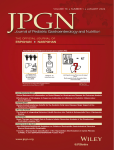Propranolol in Prevention of Portal Hypertensive Hemorrhage in Children: A Pilot Study
This article is accompanied by an editorial. Please see Schreiber RA, Propranolol and portal hypertension: Should kids be on the block?J Pediatr Gastroenterol Nutr 1999;29:10-11.
ABSTRACT
Background:
Data regarding the use of propranolol in the prevention of portal hypertensive hemorrhage in pediatric patients are limited despite its widespread use in adults with cirrhosis. The purpose of this study was to evaluate safety and efficacy of propranolol in the management of portal hypertension in the pediatric population.
Methods:
Medical information was retrieved from the records of 21 children with portal hypertension who received propranolol either before or after an episode of gastrointestinal bleeding. Data collected included diagnosis, type of portal hypertension, age at initiation of therapy, bleeding episodes before and during propranolol therapy, degree of reduction of heart rate, adherence, and adverse effects.
Results:
Fourteen of 21 patients did not experience portal hypertensive bleeding while receiving propranolol. Of the seven patients who had bleeding episodes, two had failed to adhere to the medication regimen, and four were receiving doses of less than 1 mg/kg per day. Only one of the four patients who experienced bleeding before initiation of therapy also bled while receiving propranolol, and two of the three patients who had a heart rate reduction of less than 25% each experienced a bleeding episode. Side effects were minimal and did not necessitate discontinuation of therapy in any patient.
Conclusions:
Propranolol was well tolerated with minimal side effects in our patients with portal hypertension. Adherence and adequacy of dosage (>1 mg/kg per day, more than twice daily dose frequency) are important determinants of efficacy. A reduction in heart rate of less than 25% may be associated with suboptimal efficacy.




